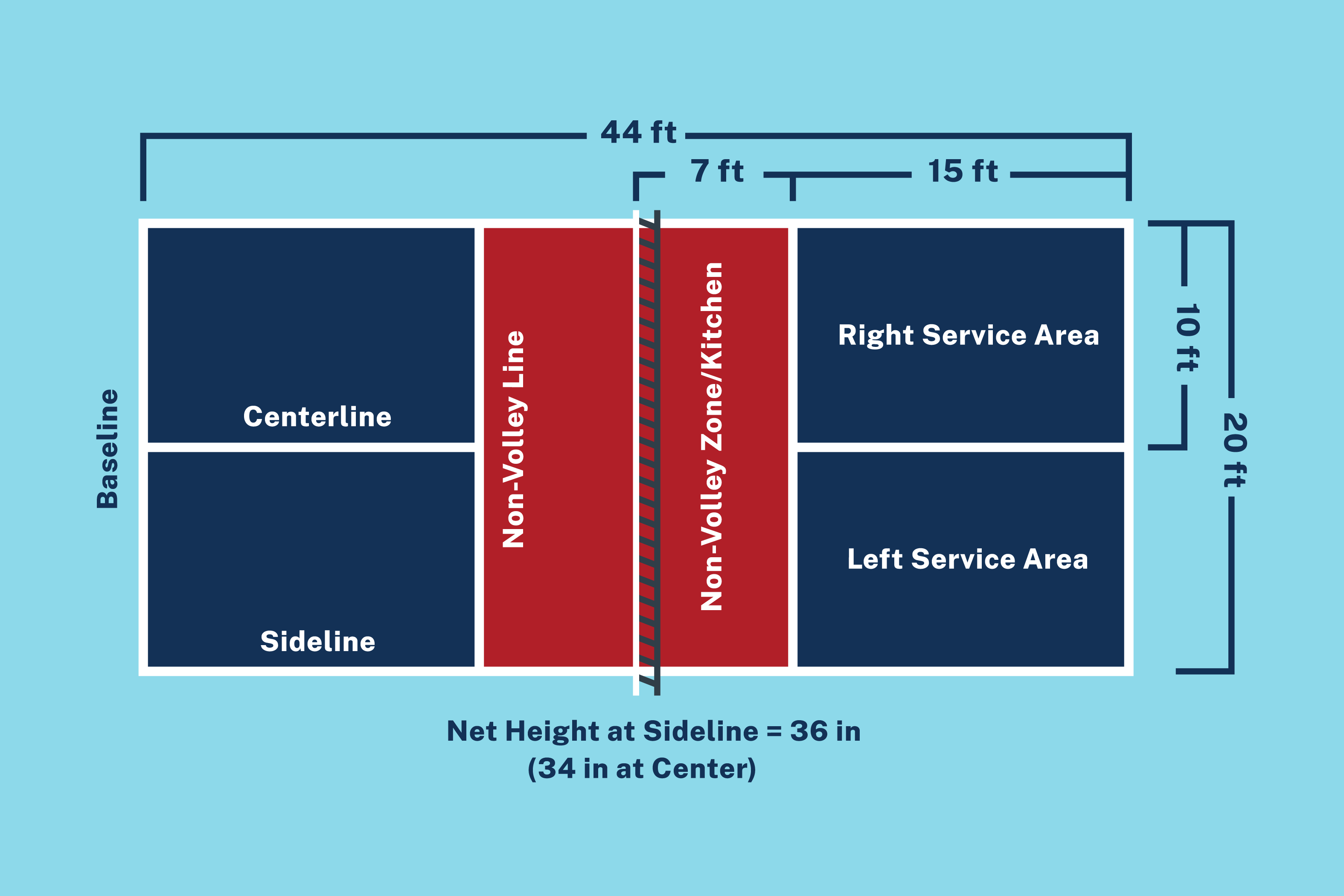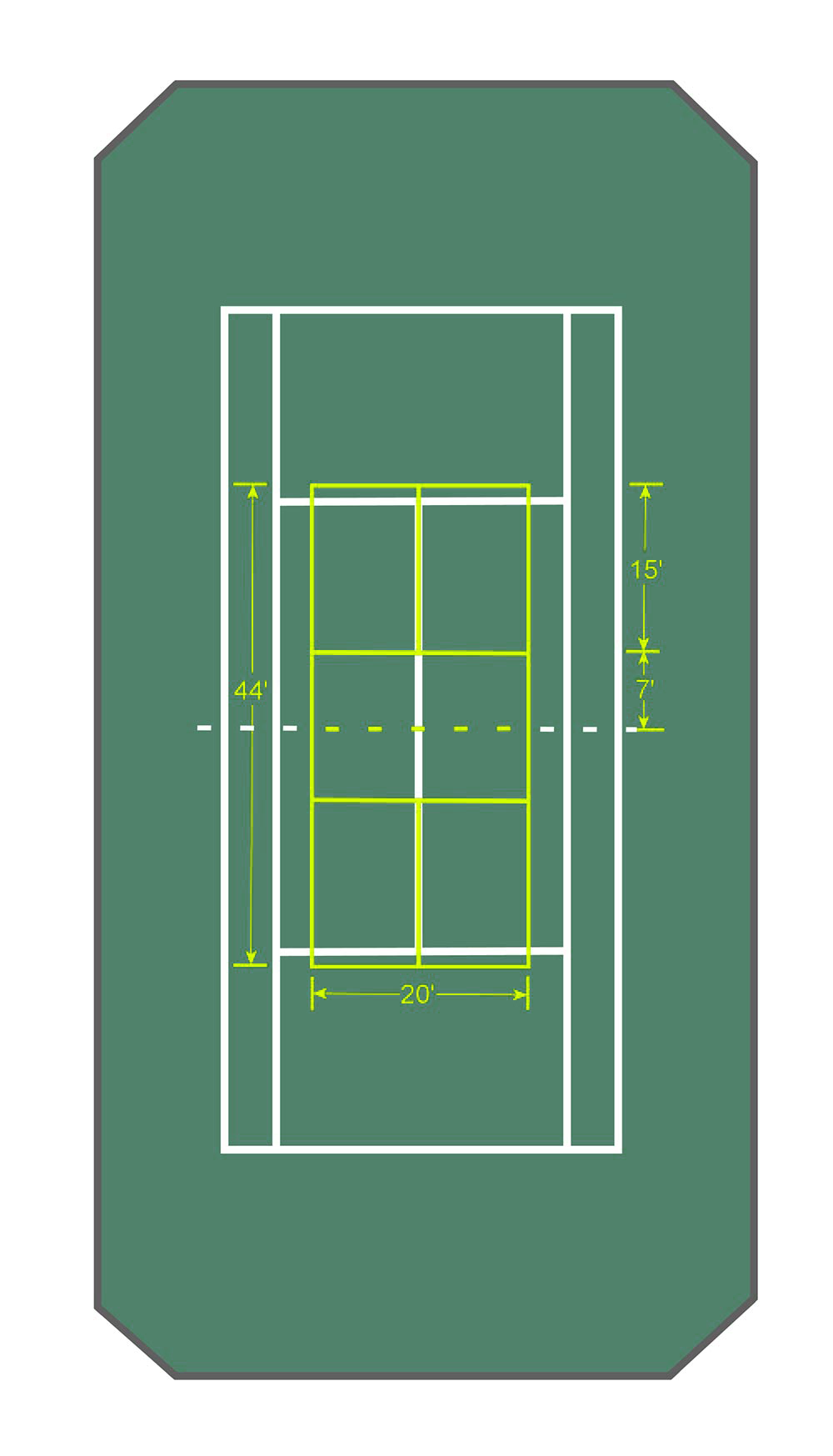How to Select the most effective Pickleball Judiciaries Design & Building in Illinois and Midwest
How to Select the most effective Pickleball Judiciaries Design & Building in Illinois and Midwest
Blog Article
Secret Consider the Construction of Pickleball Judiciaries: From Site Selection to Last Finishes
The building and construction of pickleball courts includes a series of crucial elements, beginning with the option of an appropriate site that balances availability with ecological considerations. Vital aspects such as court dimensions, surface area materials, and water drainage systems dramatically impact not just the quality of play yet likewise the durability of the center. Moreover, attention to lighting and finishing touches can raise the general experience for players and spectators alike. Understanding how each of these parts interrelates might disclose understandings that are usually overlooked, triggering a better examination of ideal methods in court construction.
Site Choice Standards
When getting started on the building and construction of pickleball courts, it is important to pin down the site selection requirements that will certainly guarantee optimal playability and ease of access. The location must be easily reachable for gamers, preferably located near houses or recreation center, to urge engagement.
Additionally, the terrain should be level and steady, as uneven ground can result in safety and security threats and affect gameplay. Adequate drainage is likewise vital; picking a website with great water overflow will certainly assist maintain court conditions throughout damaging weather.
One more crucial factor to consider is the accessibility of utilities. Access to electrical power and water is required for lights and upkeep functions. Additionally, closeness to vehicle parking facilities is necessary, helping with easy gain access to for gamers and spectators alike.
Ecological aspects can not be forgotten; natural color from trees can boost player comfort, while direct exposure to prevailing winds may interfere with play. Zoning policies and community assistance ought to be thought about to ensure that the task aligns with local guidelines and receives the support it needs for successful application. By meticulously reviewing these requirements, stakeholders can develop an inviting and functional setting for pickleball fanatics.
Court Capacities and Format
To ensure ideal gameplay and adherence to guidelines, the measurements and design of pickleball courts need to be carefully defined. A conventional pickleball court determines 20 feet in size and 44 feet in length for both songs and doubles play. The advised format consists of a non-volley zone, commonly described as the "cooking area," extending 7 feet from the net on either side. This location is important, as it affects player positioning and shot choice - Illinois and midwest.
The web height is set at 36 inches at the sidelines and 34 inches at the center, creating a mild dip that impacts round trajectory. Court markings are just as crucial; lines need to be 2 inches wide and distinct in color to make sure exposure.
Additionally, a buffer zone surrounding the court is recommended, typically extending 5 to 10 feet past the sidelines and baselines to fit players' motions and boost safety and security. Correct design and measurements not just ensure compliance with official laws yet also enhance the general having fun experience, suiting both recreational and affordable play. Cautious planning in these areas is extremely important to the effective construction of pickleball courts.
Surface Area Material Options
Choosing the best surface area material for pickleball courts is essential for making sure ideal gamer performance and security. The selection of surface can dramatically influence gameplay, including ball bounce, traction, and gamer comfort.
There are numerous options available, each with its distinct characteristics. Asphalt is a preferred option as a result of its resilience and reduced upkeep demands. It gives a solid playing surface area that can withstand different weather but might require regular resurfacing.
Concrete is an additional commonly utilized material, providing superb durability and a smooth coating. It permits for regular sphere bounce yet can be hard on gamers' joints, making it less preferable for long-term play without appropriate padding.
For those looking for improved convenience and shock absorption, cushioned acrylic surfaces provide a viable option. These surface areas incorporate a base layer with an acrylic topcoat, supplying boosted traction and a softer feeling, which is helpful for minimizing the risk of injuries.
Lastly, synthetic lawn browse around here is getting traction, especially for multi-purpose facilities. Its adaptability and reduced maintenance needs make it an eye-catching alternative, though it might not offer the same ball action as standard difficult courts. Mindful consideration of blog these alternatives will ensure an optimal having fun environment.
Drain and Lights Factors To Consider
Proper drainage and reliable illumination are necessary components in the building of pickleball courts, considerably affecting both playability and safety and security. Ample drain systems protect against water build-up, which can lead to unsafe surfaces and damages to the court structure.
Illumination is just as crucial, specifically for courts meant for night usage. The positioning of lighting fixtures must be purposefully intended to remove shadows and provide even distribution of light across the court.

Last Surfaces and Maintenance
After addressing water drainage and lights considerations, focus turns to the final surfaces and recurring upkeep of pickleball courts. Common options consist of acrylic coatings and specialized sports surface areas that offer optimal grip and padding.

Seasonal maintenance could consist of resurfacing every couple of years, relying on usage and ecological aspects. Correctly preserving webs, court lines, and bordering locations is similarly essential to give a secure and delightful having fun experience. By purchasing quality finishes and adhering to an organized upkeep routine, facility owners can ensure their pickleball courts continue to be in exceptional condition for years to find.
Final Thought
To websites conclude, the successful building of pickleball courts hinges on meticulous attention to numerous key variables. Site option need to focus on accessibility and terrain security, while court measurements and layout must comply with optimal standards for gameplay. The option of surface product considerably influences player safety and efficiency. Reliable water drainage and sufficient lights add to court long life and visibility. Finally, high quality finishes and a robust maintenance timetable are essential for maintaining the court's problem, boosting the general experience for players and spectators alike.
Report this page